Shimane Tour Report vol.4
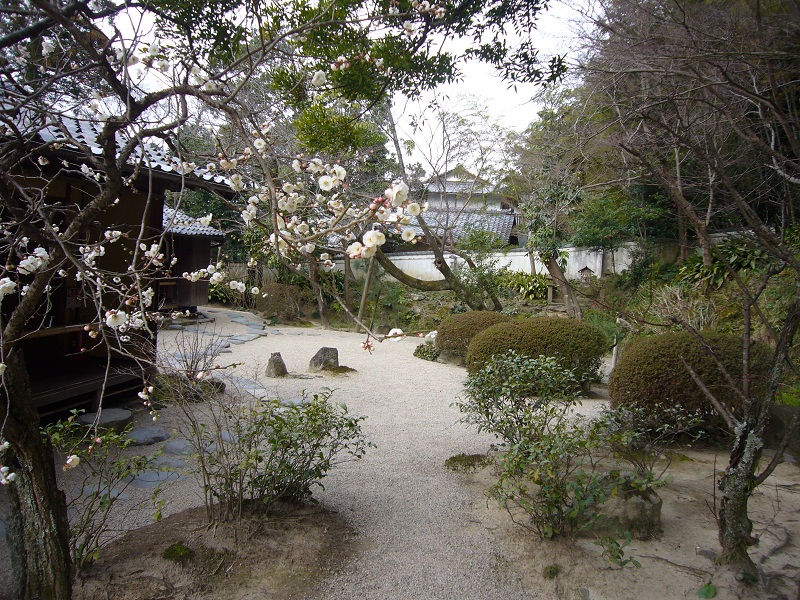
Report of Ms. Olga Isaeva ( from German)
From March 6, 2013, six international students from Waseda University in Tokyo went on a three days tour to Shimane Prefecture. Each of them wrote a report of the tour.
DAY 1: Matsue area
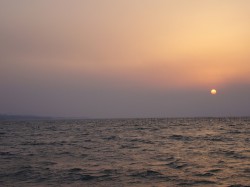 As we arrived in Matsue we actually did not know which direction we should take in order to reach the lake. Therefore we asked at the tourist information and the lady there was really kind. She gave as a map, marked the way and she even called the cruising company to ask if we need a reservation. On our way to the Boarding Point for the Shinjiko Sunset Cruising we passed the Matsue Ohashi Bridge and the Shin Ohashi Bridge and I enjoyed the amazing view over the lake and the panorama on the other side with some old Japanese houses in the background.
As we arrived in Matsue we actually did not know which direction we should take in order to reach the lake. Therefore we asked at the tourist information and the lady there was really kind. She gave as a map, marked the way and she even called the cruising company to ask if we need a reservation. On our way to the Boarding Point for the Shinjiko Sunset Cruising we passed the Matsue Ohashi Bridge and the Shin Ohashi Bridge and I enjoyed the amazing view over the lake and the panorama on the other side with some old Japanese houses in the background.
The sunset cruise is popular among tourists and therefore I imagined the ship to be kind of big. But it was a rather small but cozy one, where you could either sit inside and enjoy the view or go outside to make some nice photos. During the cruise we saw fascinating colours of the sunset playing on the water surface. Afterwards passing the shore we could experience the evening lights of the city and even see the lighted Matsue castle in the distance. The city does not have massive skyscrapers and even the hotel buildings do not appear that huge. A totally different atmosphere from the one I am used in Tokyo.
DAY : Matsue castle and the surround area
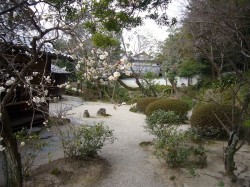 Most impressive places on this day were first the Buke Yashiki (samurai house) and afterwards the Horikawa boat trip. I think it was more this combination or maybe this order, which made me somehow believe for few seconds to enter the “Old Japan”. After visiting the Matsue castle you walk towards the river, pass two interesting temples (Matsue Gokoku Shrine and Jozan Inari Jinja) and find yourself standing on this wooden bridge looking over the river. A small yellow boat approaches the bridge and stands in a somehow harmonious contrast to this deep green of the trees and water.
Most impressive places on this day were first the Buke Yashiki (samurai house) and afterwards the Horikawa boat trip. I think it was more this combination or maybe this order, which made me somehow believe for few seconds to enter the “Old Japan”. After visiting the Matsue castle you walk towards the river, pass two interesting temples (Matsue Gokoku Shrine and Jozan Inari Jinja) and find yourself standing on this wooden bridge looking over the river. A small yellow boat approaches the bridge and stands in a somehow harmonious contrast to this deep green of the trees and water.
On the same street, where the samurai house is, you can find the Lafcadio Hearn Memorial Museum, the Lafcadio Hearn former Residence as well as the Tanabe Art Museum. The faces of those buildings have this traditional, Edo-like architecture and you literally think that in a second a wealthy looking samurai or a geisha is going to come out of one of these doors.
The samurai house it self is amazing. You literally imagine how this samurai lived and how he enjoyed the beautiful garden, which surrounded the building. I would like to see it during spring, when the trees and plants blossom. We took the boat from Matsue castle till Kyomise Karakoro Square. 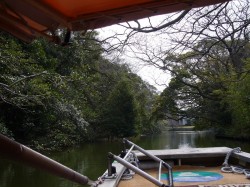 It was a small boat (even with one of those heated blankets) with a really nice driver, however he spoke only Japanese, so it was rather difficult to understand the historical background of the area which we passed through. But never the less, I actually did not mind this, because I was totally captured by the nature, the surroundings, the houses, the bridges and the silence and this incredible spirit of peace. At one point, the driver had to lower the boat roof in order to pass one of the bridges, because it was really low. So we were almost lying in the boot, which was kind of fun. And as we passed a really wide bridge, the driver stopped underneath it and began to sing this traditional Japanese song and the echo of his voice surrounded us. It was great!
It was a small boat (even with one of those heated blankets) with a really nice driver, however he spoke only Japanese, so it was rather difficult to understand the historical background of the area which we passed through. But never the less, I actually did not mind this, because I was totally captured by the nature, the surroundings, the houses, the bridges and the silence and this incredible spirit of peace. At one point, the driver had to lower the boat roof in order to pass one of the bridges, because it was really low. So we were almost lying in the boot, which was kind of fun. And as we passed a really wide bridge, the driver stopped underneath it and began to sing this traditional Japanese song and the echo of his voice surrounded us. It was great!
DAY 3 : Izumo, Oda (Iwami GInzan World Heritage Site)
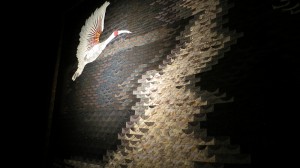 The Izumo Museum of Quilt Art and afterwards this small mine town Oda were incredible. The concept of the Quilt Art museum lies in the presentation of Japanese aesthetics including not only the exhibits but also the space, where the subjects are shown. All the exhibits have their own unique story, because they are made out of old kimonos. The arrangement in this beautiful Japanese styled house increases the effect of each piece. This kind of mysterious, spiritual and at the same time pleasant atmosphere surrounds the whole place. The Japanese feeling of aesthetic appears for Europeans sometimes kind of strange and disharmonious. The beauty lies in the fragmentariness, unbalance and the idea of transience that is why the exhibitions are theme based, depending on each season.
The Izumo Museum of Quilt Art and afterwards this small mine town Oda were incredible. The concept of the Quilt Art museum lies in the presentation of Japanese aesthetics including not only the exhibits but also the space, where the subjects are shown. All the exhibits have their own unique story, because they are made out of old kimonos. The arrangement in this beautiful Japanese styled house increases the effect of each piece. This kind of mysterious, spiritual and at the same time pleasant atmosphere surrounds the whole place. The Japanese feeling of aesthetic appears for Europeans sometimes kind of strange and disharmonious. The beauty lies in the fragmentariness, unbalance and the idea of transience that is why the exhibitions are theme based, depending on each season.
After experiencing this man made art pieces, it is more fascinating to dive into art pieces made by nature. 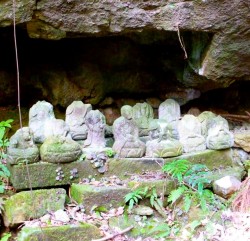 I felt in love with Omori and especially with this amazing small city Oda. I wished we could have stayed longer, because I would like to explore every corner of this interesting place. It was not the mine that had such a deep impact on me, it was this village with its incredible nature. I could have walked for hours in this forest and looked at the ruins. Just imagine walking trough the forest and at some point you notice a huge picturesque stairway covered with moss and at few places overgrown with grass. You climb it. On your way up you meet some small statues of gods or more their remains. They were left, abandoned to their fate of nature. Amazing.
I felt in love with Omori and especially with this amazing small city Oda. I wished we could have stayed longer, because I would like to explore every corner of this interesting place. It was not the mine that had such a deep impact on me, it was this village with its incredible nature. I could have walked for hours in this forest and looked at the ruins. Just imagine walking trough the forest and at some point you notice a huge picturesque stairway covered with moss and at few places overgrown with grass. You climb it. On your way up you meet some small statues of gods or more their remains. They were left, abandoned to their fate of nature. Amazing.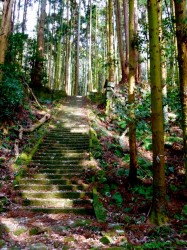 I am fascinated by the idea of combining nature and religion into this one whole. At the top of the stairway one can find ruins of destroyed temples, which were almost taken over by the nature and maybe will disappear completely after few years. An interesting thought.
I am fascinated by the idea of combining nature and religion into this one whole. At the top of the stairway one can find ruins of destroyed temples, which were almost taken over by the nature and maybe will disappear completely after few years. An interesting thought.


